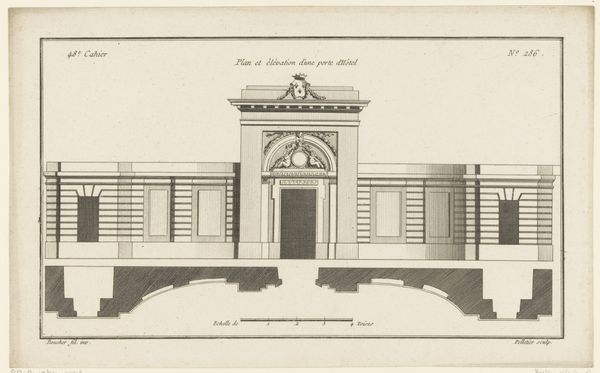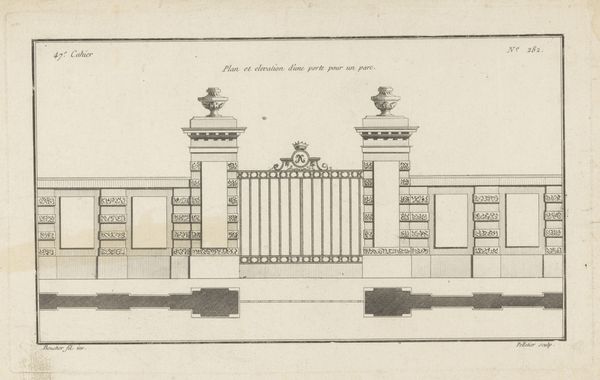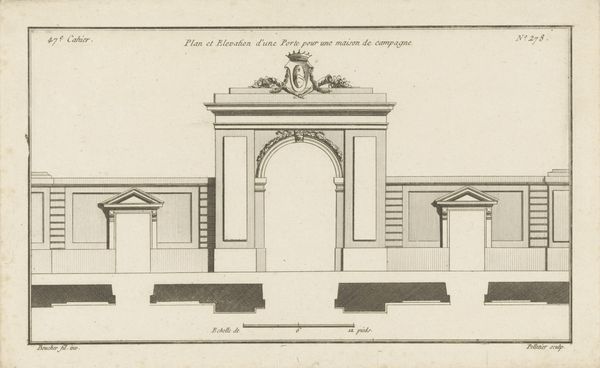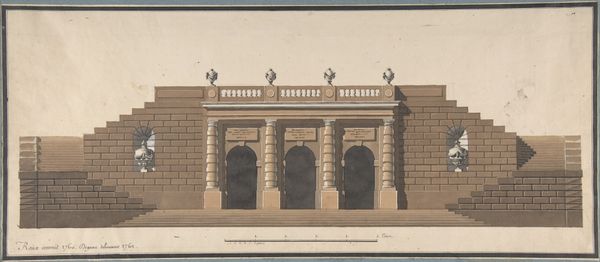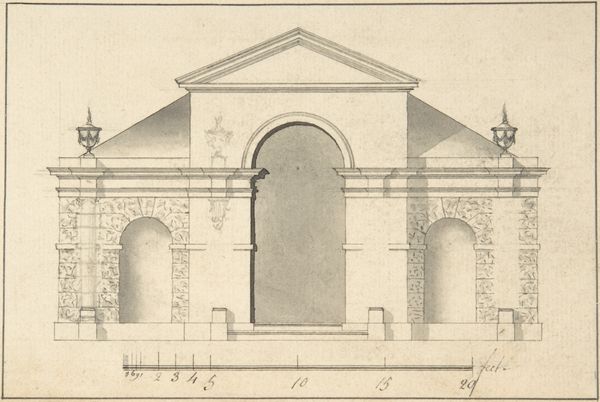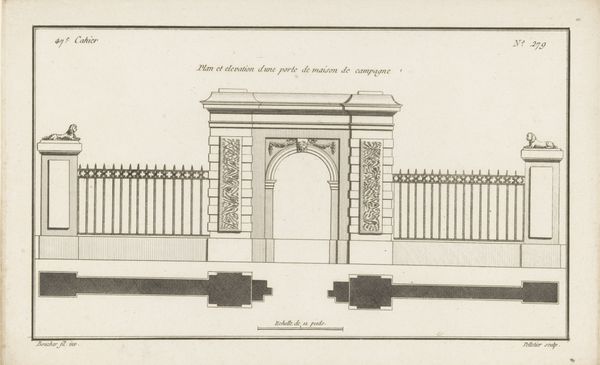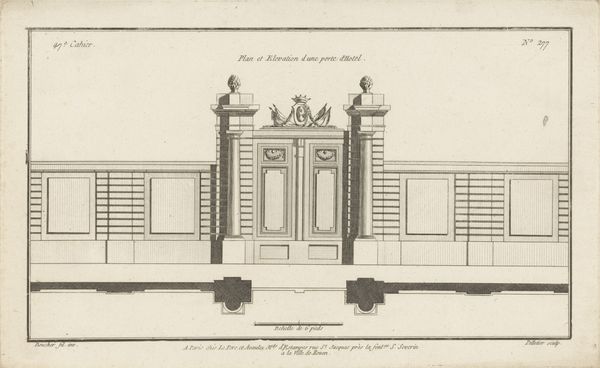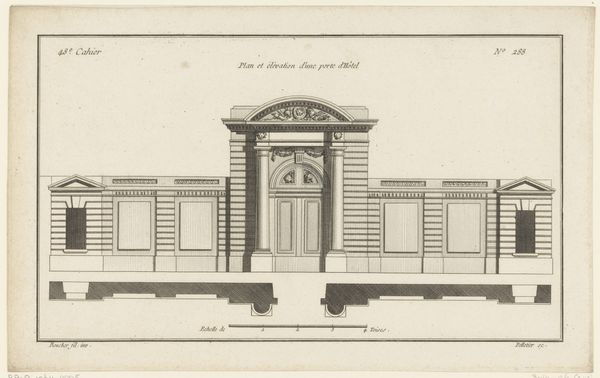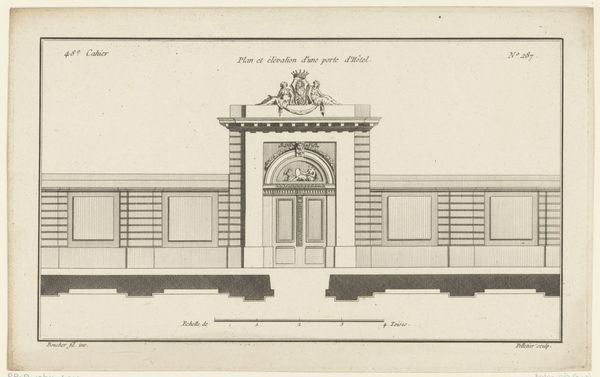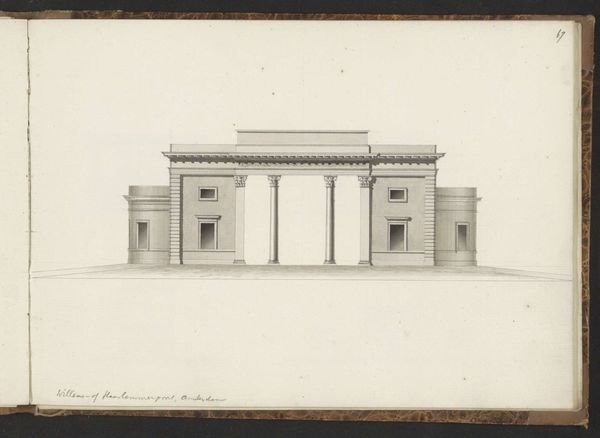
drawing, print, engraving, architecture
#
drawing
#
neoclacissism
# print
#
landscape
#
geometric
#
line
#
cityscape
#
academic-art
#
engraving
#
architecture
#
realism
Dimensions: height 204 mm, width 333 mm
Copyright: Rijks Museum: Open Domain
Jean Pelletier created this drawing titled 'Poort met rondboog' or 'Gate with round arch', in the 18th century. Dominating the structure above the central archway, we observe a grotesque head, a motif with ancient roots. These heads, often demonic or bestial, were originally apotropaic – meant to ward off evil. We see their descendants in the gargoyles of Gothic cathedrals, forever frozen in a silent scream against the darkness. But as time marches on, their symbolism shifts. By the Renaissance, these heads had become symbols of classical antiquity, adornments for grand buildings. Looking at Pelletier’s gate, we see how this transformation continues. The head is now part of an aesthetic exercise, a design element stripped of its primal fear. The grotesque’s journey mirrors our own; it’s a testament to how symbols are reborn, retaining whispers of their past lives while adapting to new cultural landscapes. It is as though, through this image, we are peering through time itself.
Comments
No comments
Be the first to comment and join the conversation on the ultimate creative platform.
